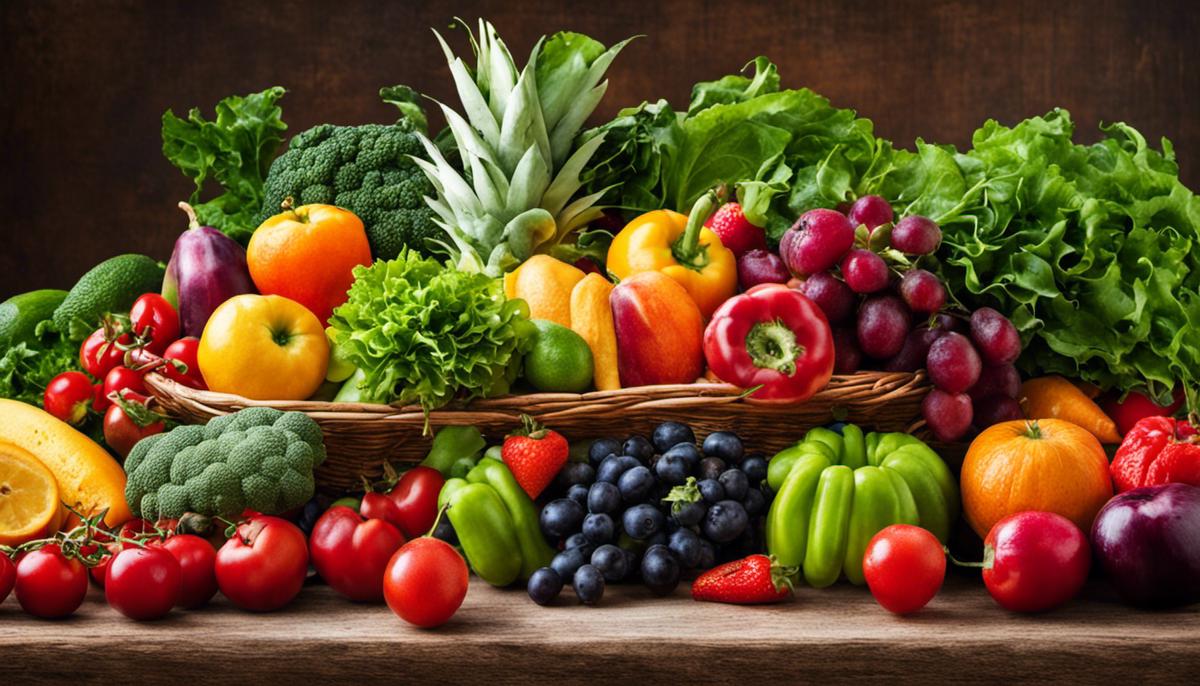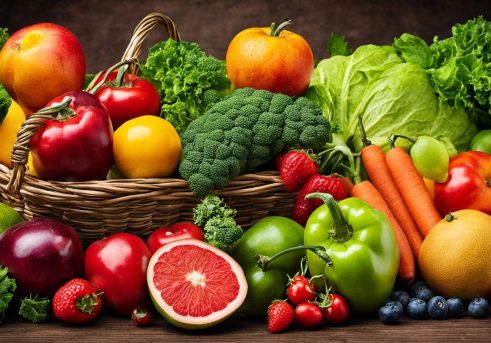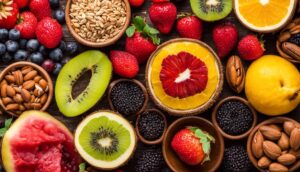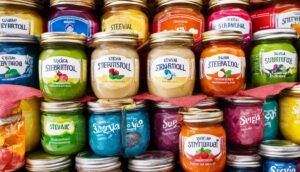Several people today are embracing healthier lifestyles and food choices. Central to this shift is the concept of clean eating, which essentially promotes increased intake of whole foods that are minimally processed, while limiting or completely avoiding processed or refined foods. This era of conscious consumerism demands a clear understanding of clean eating as well as the ability to create and follow balanced and diverse meal plans. By gaining these valuable insights and learning to cook a variety of clean eating recipes, you empower yourself to make more nutritious choices, enabling you to live a healthier and happier life.
Understanding Clean Eating
The Essential Nature of Clean Eating: A Food Lover’s Guide
An undying love for food often means embracing an appreciation for the satisfying spectrum of world cuisines, from the aromatic spices of the Middle East to the comforting, robust flavors of Mediterranean dishes. But appreciating and relishing food isn’t just about flavor profiles; it’s a celebration of ingredients in their purest form. That’s the allure of clean eating, a concept that nudges food lovers to appreciate quality ingredients as they are, embracing food in its most natural and unprocessed state.
Clean eating isn’t a celebrity-endorsed fad diet or a weight-loss quick fix. It’s a lifestyle choice revolving around the idea of simplicity and authenticity, leading to an improved overall well-being. Pioneered by the health-conscious circles, clean eating is centered on consuming whole or “real” foods, those that are minimally processed, refined, and handled, making them as close to their natural form as possible.
Why the hype over clean eating, one might ask? It’s simple, really. It’s about taking control of what fills the plate and eventually nourishes the body. When food is stripped down back to its basal elements, we get to experience its authentic taste, appraise its natural texture, and most importantly, harness its nutritive potential.
Increase longevity, boost energy levels, improve brain function – the benefits of clean eating seem to be endless. Minimally processed foods often pack ample nutrients, fiber, and antioxidants, minus the unhealthy fats, sugar, and sodium. This affects not only physical health but also mental health, right from managing weight, bolstering heart health, stabilizing blood sugar levels, enhancing the mood, and even helping the brain function better.
But clean eating isn’t just about physical health. There’s an intrinsic beauty to the meditative act of preparing simple, fresh ingredients, understanding the journey they’ve been through from farm to fork, and creating joyful, nourishing meals. Clean eating cultivates a mindful, respectful relationship with food and the environment, inspiring consciousness about sustainable practices and reducing waste.
Right from buying seasonal produce and whole grains at the local farmer’s market, learning to read food labels, cooking from scratch, to practicing portion control, embracing clean eating doesn’t require a radical lifestyle overturn. It’s one delicious decision after another, a gradual shift to quality over quantity, and taste over convenience.
Clean eating isn’t a temporary detox regime; instead, it’s about working over time to instill ingrained habits that consider what, when, and where food comes from. Measuring success in clean eating isn’t about the number on the scale, but about the subtle richness and flavors in every bite, the joy it brings, and the energy it provides.
So, here’s to slowing down, to reveling in the simplicity of our foods and fostering a profound intimacy with the flavors and the origins of our meals. Because at the heart of this culinary journey, clean eating is much more than just a dietary choice; it’s a celebration of food in its purest form. Dive in and explore this exciting territory – your body, and your tastebuds, will thank you. Cooking, enjoying, and sharing clean, wholesome foods offers a refreshing new way to experience the joys of food. Ultimately, clean eating is an adventure for both our palate and our wellbeing.

Creating Clean Eating Meal Plan
Creating a Balanced and Diverse Clean Eating Meal Plan
Crafting a clean eating meal plan requires mindful engagement – a harmonious tango between taste, nutrition, and variety. Just as you wouldn’t want to attend a concert with only one repetitive tune, the palate also craves a symphony of flavors, ensuring every meal, every bite, resonates with freshness and wholesomeness – a celebration of culinary diversity.
When initiating the creation of a nutrient-rich meal plan, visualization is pivotal. Picture the entire rainbow of fruits, vegetables, grains, and lean proteins pulsating with life. These will form the palette (and the palate) of your clean eating lifestyle:
- Eating the Rainbow: Include an assortment of vibrant fruits and vegetables in your meals – it tickles the taste buds and nourishes the body. The color of produce is often a clue to the kinds of nutrients they contain. So make sure to cover every color spectrum to ensure a varied composition of essential vitamins and minerals.
- Whole Grains are the Whole Package: Whole grains, unlike refined ones, retain all their nutritious germ, bran, and endosperm. This means more fiber to regulate your gut and keep cholesterol levels in check, alongside a good dose of B vitamins. Substitute polished white rice with brown, or switch regular pasta with the whole wheat kind.
- Plant-based Proteins: Plant-based proteins such as legumes, nuts, seeds, and tofu, alongside lean meats, are integrated powerhouses in a clean eating lifestyle – essential for muscle growth and repair. By including more plant-based proteins, you also consciously diminish your carbon footprint, reflecting sustainability, a key pillar of clean eating.
- Unprocessed, Uncompromised: Replace processed foods, laden with chemicals and preservatives, with unprocessed, organic options where possible. Cook meals at home, utilizing fresh ingredients. This allows control over what goes into your food- you can season without worry and enjoy the intrinsic flavors of organic produce.
- Good Fats Over Bad: Substitute saturated and trans fats found in fast food, butter, and fried snacks with unsaturated fats present in olive oil, nuts, seeds, and avocados. These help maintain a healthy heart and add depth to your dishes.
- Hydrate Right: Avoid sugary drinks and excess caffeine. Instead, stay hydrated with water, herbal tea, and fresh fruit-infused water – a simple yet effective clean-ingredient beverage.
- Savor Mindfully: Part of clean eating is appreciating your meals. Sit down, eat without distractions, engage with each bite, and savor the boundless flavors. Mindful eating ensures better digestion and increases satisfaction levels.
A balanced, diverse clean eating meal plan is more than a healthy way of consuming food; it’s an experience that tantalizingly engages all your senses while nourishing your overall well-being. So, go ahead, draw up that meal plan and let the food adventurer in you rejoice in the delightful expedition of clean eating. Bon Appétit!

Cooking Clean Eating Recipes
– Eating the Rainbow
One of the easiest ways to ensure a balanced diet is to ‘eat the rainbow’; this phrase refers to the notion that the more colorful your menu, the more variety of nutrients you’re likely to consume. Each color often signifies different benefits: the lycopene in red tomatoes supports heart health, while the beta-carotene in orange sweet potatoes bolsters vision. Purple foods like eggplants or berries are abundant with antioxidants. Green veggies, full of chlorophyll, aid in detoxification.
– Whole Grains are the Whole Package
Eating clean encourages a move towards whole, unrefined grains that maintain their fibrous and nutritious bran and germ. These grains – like brown rice, barley, quinoa, or oats – aren’t stripped of their natural goodness like their processed counterparts. They offer a whole host of nutrients, from B-vitamins to antioxidants, as well as being fantastic sources of slow-release energy.
– Plant-based Proteins
While lean meats can be part of clean eating, a big emphasis should be on integrating plenty of plant-based proteins into meals. Legumes, like black beans or lentils, are not only packed with protein but also brimming with fiber, making them a fantastic two-for-one deal. Nuts and seeds aren’t slouch either; they deliver quality proteins along with healthy fats.
– Unprocessed, Uncompromised
At its core, clean eating is about pursuing the ‘less is more’ approach, especially when it comes to processed food. Instead of grabbing pre-packaged snacks or meals, focus on fresh, whole foods that aren’t packaged with artificial preservatives or sweeteners. This also means preparing meals from scratch to gain control over the ingredients, making the experience as gratifying as it is wholesome.
– Good Fats Over Bad
Fats aren’t all enemies. Clean eating highlights the importance of choosing good fats over bad. Avocados, for example, are full of heart-healthy monounsaturated fats, while nuts and fish are rich in omega-3 fatty acids, which support brain health. On the other hand, processed foods often come with trans fats or high levels of saturated fats, which can negatively impact heart health.
– Hydrate Right
Water is crucial for overall health and should be your primary beverage in clean eating. Incorporate hydrating foods such as cucumbers, watermelon, and citrus fruits into your diet, and limit consumption of sugary drinks, like soda, or overly caffeinated beverages.
– Savor Mindfully
Clean eating isn’t just about what goes on the plate; it’s about how that food is eaten. Approach each meal and snack with mindfulness, taking the time to appreciate the flavors, textures, and smells. This will not only enhance your culinary enjoyment but also prevent overeating by helping you realize when you’re full.
By incorporating these clean eating strategies, anyone can whip up meals that are as delectable as they are beneficial. It’s all about getting back to basics, enjoying natural foods and, most importantly, savoring the journey in the kitchen. Keep it joyful and delectable, and clean eating will become more than just a fleeting diet—it’ll be a lifestyle that keeps giving back in every bite.

Clean eating requires more than just knowledge; it calls for commitment, creativity, and the ability to make informed choices. As you traverse through the journey of clean eating, you will find yourself becoming more aware and appreciative of the food you consume. However, the journey doesn’t stop there. As you become adept at creating and preparing clean eating recipes, ensure to share this knowledge, inspire others, and contribute towards a healthier collective lifestyle. We simply need to remember that clean eating isn’t a diet trend, but a sustainable lifestyle approach that centers on nourishing our bodies with whole, vibrant foods.





